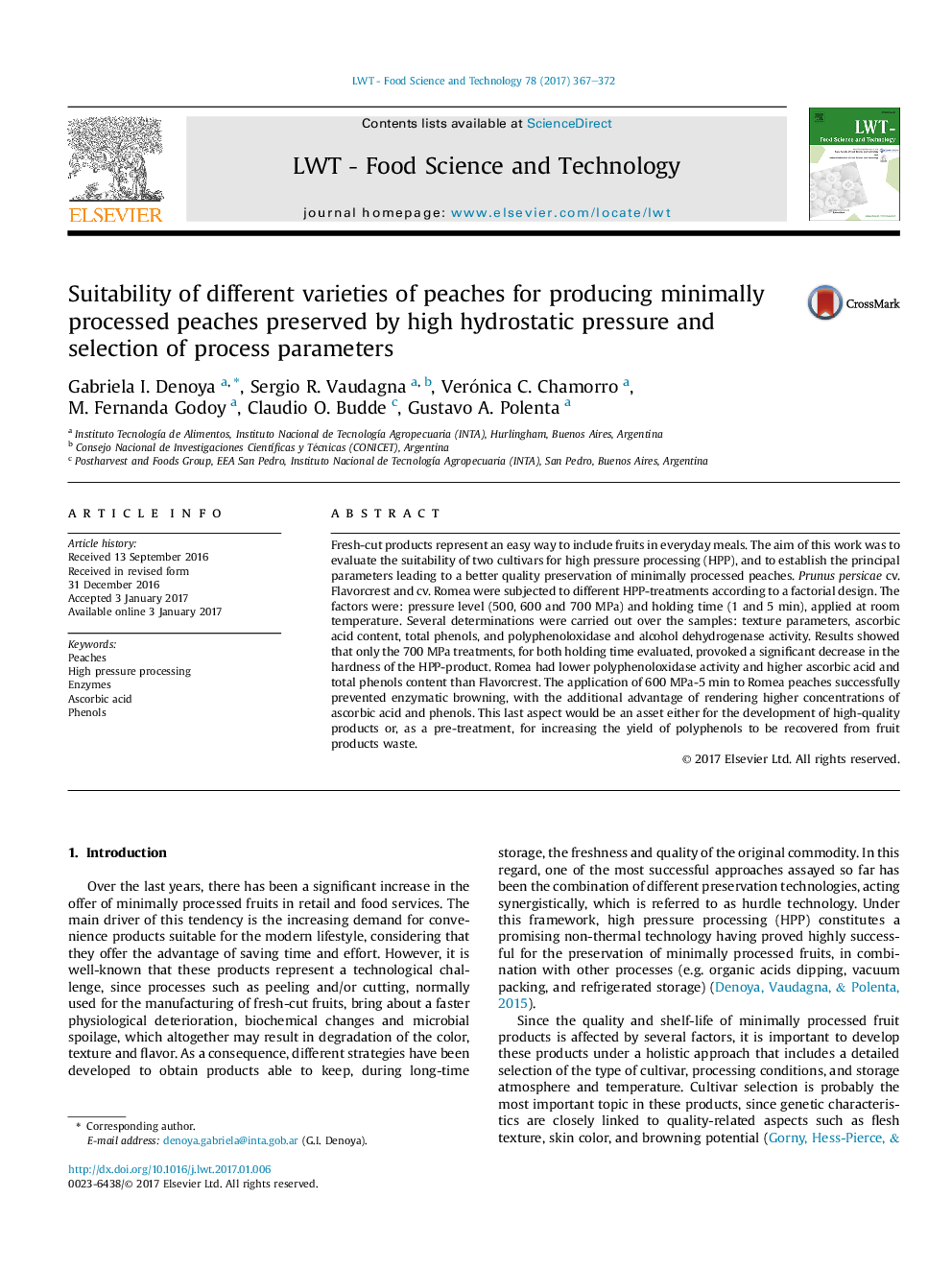| Article ID | Journal | Published Year | Pages | File Type |
|---|---|---|---|---|
| 5769059 | LWT - Food Science and Technology | 2017 | 6 Pages |
â¢Levels of pressure up to 600 MPa did not cause negative effects on the peach texture.â¢Peach varieties with low polyphenoloxidase activity would be more suitable for HPP.â¢600-700 MPa improved the extractability of ascorbic acid from peach pieces cv. Romea.â¢High pressure improved the extractability of phenols from fresh-cut peaches.
Fresh-cut products represent an easy way to include fruits in everyday meals. The aim of this work was to evaluate the suitability of two cultivars for high pressure processing (HPP), and to establish the principal parameters leading to a better quality preservation of minimally processed peaches. Prunus persicae cv. Flavorcrest and cv. Romea were subjected to different HPP-treatments according to a factorial design. The factors were: pressure level (500, 600 and 700Â MPa) and holding time (1 and 5Â min), applied at room temperature. Several determinations were carried out over the samples: texture parameters, ascorbic acid content, total phenols, and polyphenoloxidase and alcohol dehydrogenase activity. Results showed that only the 700Â MPa treatments, for both holding time evaluated, provoked a significant decrease in the hardness of the HPP-product. Romea had lower polyphenoloxidase activity and higher ascorbic acid and total phenols content than Flavorcrest. The application of 600 MPa-5 min to Romea peaches successfully prevented enzymatic browning, with the additional advantage of rendering higher concentrations of ascorbic acid and phenols. This last aspect would be an asset either for the development of high-quality products or, as a pre-treatment, for increasing the yield of polyphenols to be recovered from fruit products waste.
